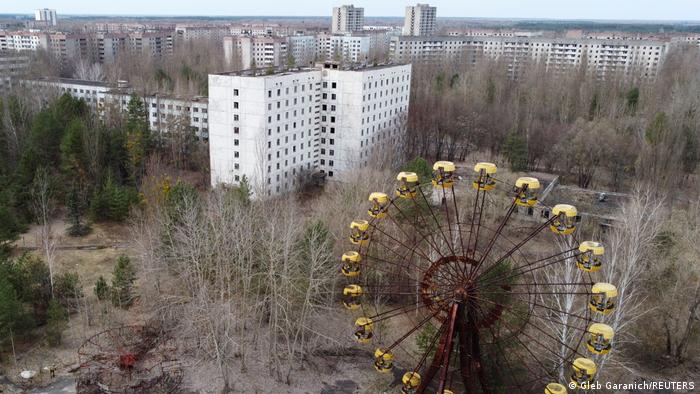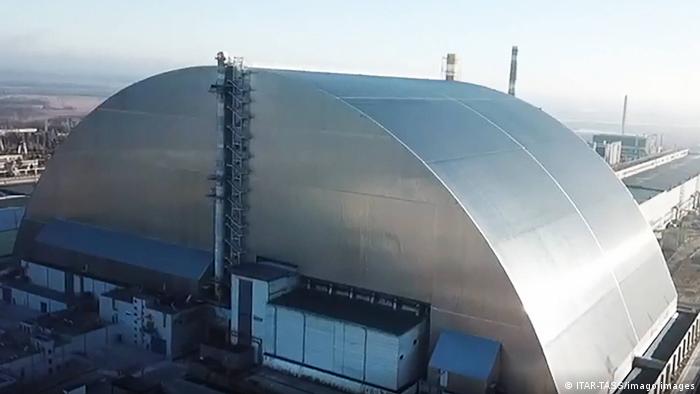In late February, Russian troops invaded Ukraine to occupy the Chernobyl nuclear power station, the site of the worst ever nuclear disaster. They also seized an exclusion area that contained radioactive waste facilities and reactors.
Since then, the 210 guards and technicians who are responsible for keeping it safe have not taken a break.
The International Atomic Energy Agency, the United Nations body responsible to nuclear security, states that a key pillar for nuclear safety is giving operating staff the ability to make decisions without undue pressure. Chernobyl’s staff are struggling to fulfill their duties in the face of an invasion that has already forced over 2 million people to flee.
A combination of factors has increased fears of radioactive leaks from the Chernobyl site. There is no risk of a nuclear meltdown since the last reactor was shut down more than 20 years ago. The main concern is for the staff.
In a Tuesday press release, IAEA Director General Rafael Grossi stated that “I’m deeply worried about the stressful situation facing staff at Chernobyl nuclear plant and the potential dangers this entails to nuclear safety.” “I appeal to the forces in effective command of the site to facilitate the safe rotation and management of personnel.”
Communications and power outages
Problems with electricity and communications add to the concern.
Tuesday’s IAEA report stated that data transmission from Chernobyl monitoring systems was lost and Ukraine’s regulatory agency could only communicate via email. State-run nuclear energy company Ukrenergo reported Wednesday that a high-voltage electricity line connecting Kyiv and Chernobyl had been disconnected. That has forced workers to rely on diesel generators for electricity and there are concerns it could disrupt the cooling pumps for spent fuel.
Radioactive fuel rods heat up even after being taken out of reactors. They must be chilled in cold water for many years before being moved to dry storage. More than 20,000 spent fuelrods are stored at the site in both dry and wet storage.
The radiation could harm workers if the cooling pool were to dry out. Experts said that a large radiation release similar to the 1986 disaster was unlikely and would not have any “repercussions outside of the plant.”
“It’s also important to remember that drying out of the lakes will not cause a nuclear reaction or explosion to take place,” said Mark Foreman in a statement.
A Report from the Ukrainian State Regulator in 2011.Stress-tested different scenarios that could cause failure. It was found that even if electricity was cut, the loss in the pool water cooling function would increase temperatures, but not enough to cause an accident.
The IAEA tweeted Wednesday that it confirmed the heat load of the used fuel storage pool and that the cooling water volume was sufficient to effectively remove heat from the environment without the use of electricity.
Jan Haverkamp, a Greenpeace nuclear expert and nuclear expert, said that the spent fuel is so old that evaporation should not be a problem. However, he said that an “explosion hitting the pool” could cause overheating.
The loss of electricity can also impact the ventilation system, making it harder to manage radioactive particles.
Foreman stated that workers may find it more difficult to access certain areas of the site if they don’t have full protection. “They may have greater difficulty changing out of their protective clothes.” Until the power is restored, workers might have to be restricted from certain areas of the site.
Nuclear safety
Vladimir Putin, Russian president, has invaded Ukraine in full. This spotlight has focused on nuclear power security.
Grossi stated Monday that “if there is ever a nuclear accident, it will not be a tsunami caused naturally by mother earth.” Grossi was referring specifically to the earthquake which flooded the Fukushima daiichi nuclear power reactor in Japan in 2011. It will instead be due to human failures to act when they could.
Chernobyl stands as a powerful symbol of nuclear disaster. In 1986, a sudden surge of power during a reactor test destroyed Unit 4 of the poorly designed nuclear power station, in what was then part of the Soviet Union. The subsequent fire emitted radioactive material into the air, causing authorities to set up an exclusion area and evacuate hundreds of thousands of people. The disaster is believed to have caused the deaths of dozens.
Since then, radiation levels have fallen. Some exclusion zone residents have returned to their homes, and now live in areas with radiation levels that are higher than average but not fatal. Radiation suddenly spiked after Russian troops entered the area in February. This could be due to heavy vehicles lifting a layer of topsoil or kicking up dust into the air.
The IAEA concluded that the levels are not dangerous for the public. But the unprecedented reality of war in a country operating nuclear power stations has raised the specter of nuclear catastrophe.
Last week, the Russian army attacked Europe’s biggest nuclear power plant before taking over. Although there was no safety issue, this was the first time that military explosives were used to attack an operating nuclear facility.
“We’ve entered a market that the industry was completely unaware of,” said Haverkamp. “Nuclear power is not an energy source that belongs within a war situation,” said Haverkamp.
Edited By: Jennifer Collins




